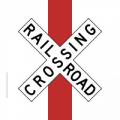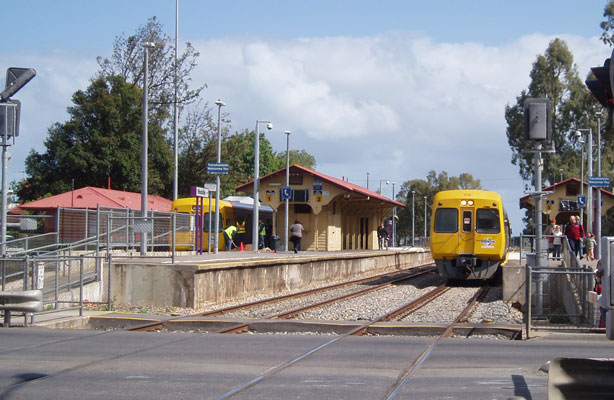Improving Safety at Railway Level Crossings
The objective of this IAP (ARTES element 20) Feasibility Study is to assess the feasibility and viability, from a technical, economical and non-economical perspective, of an integrated solution and associated services, supporting the improvement of railway level crossing safety.
Today, there are still over 120.000 level crossings in EU countries. On average, there are five level crossings per ten line-km in the EU. Most of these crossings are crossings with public roads, cycle tracks and footpaths. Only a minority are crossings with private paths.
Similarly to a road intersection, there is an increased risk of a collision at a level crossing. This risk is inherent and relatively difficult to reduce by available means. The collisions at level crossings are almost always severe due to the high mass of the train and a limited possibility of the train driver to avoid the collision.
To reduce the risk of collision at existing level crossings, there is a wide range of measures and installations available. They range from improvements of visibility conditions and use of traffic signs to sophisticated systems assuring a physical protection, such as automatic barriers.
INTRODUCTION OF SPACE-BASED ASSETS
Understanding positioning (of trains and road users) and communication (train to level crossing, and to train control) are important elements in ensuring safety at railway level crossings. It is worthwhile to investigate how these functionalities can be provided using satellite navigation and satellite communication solutions, improving and adding value to the existing situation;
- With Satellite Navigation, the position and speed of the train will be known at any time, and through the suitable communication to all who need to know,
- Satellite communications services provide coverage in remote areas with little to no terrestrial communications solutions and provide contingency in case terrestrial solutions fail.
Satellite navigation and/or satellite communication could provide the following opportunities:
- By introducing GNSS to determine the speed of a train in relation to its distance to a level crossing, the moment the alarm signal or lights are activated or the barriers are closed can be optimised, reducing the level crossing closure time in case trains are slower or stopped. As such accidents due to impatience could be reduced.
- By relaying information (situational awareness) of a railway level crossing via video, images or other sensors to an approaching train, preventive action can enabling the train driver to take necessary measures to prevent an accident in case of a dangerous situation at the crossing. Typically, information only needs to be relayed to the train in case it is approaching the level crossing and can be triggered by the position of the train.
- By introducing vehicle to train communication (e.g. through a level crossing interface) the vehicle driver can be warned of an approaching train. It may even introduce the opportunity to actively stop the vehicle.
- Real-time alerting of police services in case of a violation of the traffic signs and lights at the level crossing, or alerting emergency services in case of an accident. This may be done by video and image analysis including real-time communication to crisis rooms and alerting of closest police units, based on their location.
USERS AND STAKEHOLDERS
Users and stakeholders interested in the improvement of safety at railway level crossings include the railway infrastructure operators, train companies (including the train drivers), road users and operators, national safety authorities, national safety administrations, as well as international organisations such as the European Level Crossing Forum (ELCF) and the European Railway Agency (ERA). These users and stakeholders will not only provide needs for improving the safety, but will also address the conditions and restrictions which solutions and services have to comply with to be authorised for use in level crossings.
FEASIBILITY STUDY
The study aims at evaluating the added value, technical feasibility and commercial viability of introducing space assets for the improvement of safety at railway level crossings, and at specifying a viable and sustainable integrated solution and associated services in support of safety at level crossings. The proposed integrated solution shall satisfy the needs and constraints of the relevant stakeholders and users, and shall provide viable and sustainable services.
The specification of the integrated solution shall employ at least two different types of space assets such as Satellite Communications, Satellite Navigation, Earth Observation, Navigation, and Human Spaceflight technologies, as well as existing terrestrial assets.
The activity is a first step and expected to be followed up by a possible Demonstration Project to establish eventually a sustainable service to support improvement of safety at level crossings.
The study content will include as tasks: stakeholder / user consolidation, refinement of user requirements, state of the art analysis, service definition, system definition, proof of concept, viability analysis, and implementation roadmap.
FOR MORE INFORMATION
Information on the call for proposals has been published on ESA’s Electronic Mail Invitation to Tendering System, EMITS (http://emits.esa.int), under the reference AO 7147 (under “Open Invitations to Tender”). The applicable tender solicitation package can be downloaded by registered users under this 'Announcement of Opportunity' (AO). This specific call is open for applications until July 18, 2012. 'Entity Registration' is possible on the same website.




